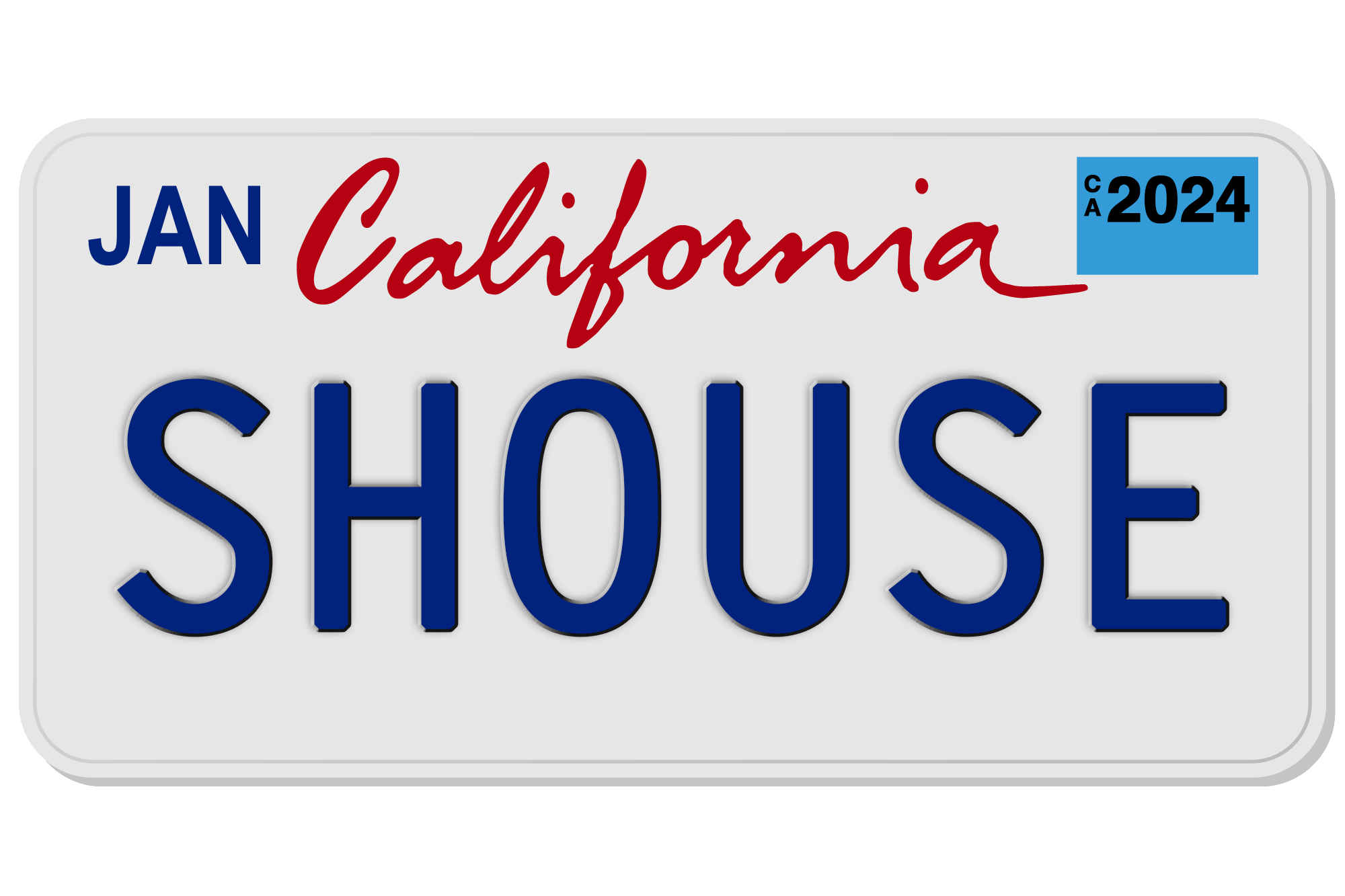Vehicle Code § 5204 CVC is the California statute that requires people to attach up-to-date or current registration tabs on the rear license plate of their vehicles. A violation of this code section is an infraction punishable by a fine of $197.
In this article, we will quote the full language of the code section, and then provide further analysis and guidance. The code section reads as follows:
5204. (a) Except as provided by subdivisions (b) and (c), a tab shall indicate the year of expiration and a tab shall indicate the month of expiration. Current month and year tabs shall be attached to the rear license plate assigned to the vehicle for the last preceding registration year in which license plates were issued, and, when so attached, the license plate with the tabs shall, for the purposes of this code, be deemed to be the license plate, except that truck tractors, and commercial motor vehicles having a declared gross vehicle weight of 10,001 pounds or more, shall display the current month and year tabs upon the front license plate assigned to the truck tractor or commercial motor vehicle. Vehicles that fail to display current month and year tabs or display expired tabs are in violation of this section.
(b) The requirement of subdivision (a) that the tabs indicate the year and the month of expiration does not apply to fleet vehicles subject to Article 9.5 (commencing with Section 5301) or vehicles defined in Section 468.
(c) Subdivision (a) does not apply when proper application for registration has been made pursuant to Section 4602 and the new indicia of current registration have not been received from the department.
(d) This section is enforceable against any motor vehicle that is driven, moved, or left standing upon a highway, or in an offstreet public parking facility, in the same manner as provided in subdivision (a) of Section 4000.
(e) Prior to issuing a citation for a violation of this section, a law enforcement officer shall verify, using available department records, that no current registration exists for that vehicle. A citation shall not be issued for failure to comply with this section against any vehicle that has a current registration on file with the department.
Examples
- driving a car without any registration tabs on a rear plate.
- operating a vehicle with expired registration tabs.
- leaving a car parked in a public parking lot or parking facility with expired tabs.
Legal Defenses
A person can challenge a charge under this statute with a legal defense. A few common defenses include people showing:
- law enforcement made a mistake,
- proof of correction, and/or
- a peace officer or police department did not have probable cause to stop the driver.
Penalties
A violation of California Vehicle Code Section 5204 is an infraction (as opposed to a misdemeanor or a felony). Offenses are punishable with traffic tickets and fines of $197.
Our California criminal defense attorneys will highlight the following in this article:
- 1. What does California law say about attaching vehicle registration tabs?
- 2. Can an accused raise a legal defense?
- 3. What are the penalties for violating CVC 5204?
- 4. Are there similar offenses?

Vehicle Code 5204 CVC requires people to attach up-to-date or current registration tabs on the rear license plate of their vehicles.
1. What does California law say about attaching vehicle registration tabs?
CVC 5204 requires motorists to attach current registration tabs/stickers on the rear license plate of their vehicles.1
Exceptions to this general rule apply to truck tractors and commercial motor vehicles with a gross vehicle weight of 10,001 pounds or more. Operators of these vehicles must attach current registration tabs to the front license plate of the tractor or vehicle.2
Note that a person does not have to be driving a vehicle to be in violation of this law. The code section is enforceable against any motor vehicle that is:
- driven,
- moved, or
- left standing on a highway or in a public parking facility.3
When a parked car is without proper tabs, the driver of the vehicle will receive a parking citation for committing a parking violation.
Note that if people in California need to renew their registration tabs, they can do so by visiting a local Department of Motor Vehicles (DMV) office or by visiting the DMV website.
2. Can an accused raise a legal defense?
Lawyers who help clients contest traffic tickets draw upon certain legal strategies to challenge these sorts of charges. Three common ones include attorneys showing that:
- the police made a mistake.
- an exception applies.
- the police did not have probable cause to stop a driver.
2.1 Police made a mistake
Sometimes a police officer may mistakenly charge a person with a registration tab violation. This is especially true with parked vehicles when the police do not have the opportunity to speak with the driver. There are times when dirt or grease prevents an officer from correctly observing the date on a tab. Therefore, people can always challenge a ticket by showing that the police made a mistake.
2.2 Showing proof of correction
Violations of this law are correctable violations in California. This means that if a driver receives a ticket for not following the law, he/she can avoid paying a fine by obtaining current registration tabs prior to his/her court date. The driver just has to show the court some proof of correction.
2.3 No probable cause
The Fourth Amendment to the U.S. Constitution says that police must have probable cause before they can stop or arrest a person of an offense.
If a person was stopped or arrested for violating VC 5204, and there was no probable cause, then any evidence obtained following the improper stop/arrest could get excluded from the case. The result is that a case could get dismissed or charges could get reduced.4

Violations can result in a fine of $197.
3. What are the penalties for violating CVC 5204?
Traffic violations under this law are treated as infractions. Violations result in a person receiving a traffic ticket that carries an underlying fine of $197.
Note that a violation does not result in any points being assessed against the driver’s DMV record.
4. Are there similar laws?
There are three laws similar to VC 5204 These are:
- display of license plates – VC 5200,
- fastening a license plate – VC 5201, and/or
- misuse of handicap placards or license plates – VC 4461.
4.1 Display of license plates – VC 5200
Per VC 5200, display of license plates refers to the law that states:
- if the DMV issues a driver two license plates, he must put one on the front of the vehicle and one on the rear, and
- if the DMV issues a motorist just one plate, he must put it on the rear of the car.
According to this statute, drivers must properly place their license plates on their vehicles. Once they do, they must then comply with VC 5204 and attached current registration tags to those plates.
4.2 Fastening a license plate – VC 5201
Per CVC 5201, fastening a license plate refers to the law that requires drivers to securely fasten their license plates to their motor vehicles and keep them clear and legible.
As with a violation of VC 5204, a violation of this law is an infraction that is punishable by a traffic ticket and a fine.
4.3 Misuse of handicap placards or license plates – VC 4461
Under VC 4461, misuse of handicap placards or license plates refers to the offense where people either:
- let someone else use their disabled placards or plates,
- use someone else’s placard or an invalid placard, or
- wrongfully park in a handicapped parking space.
California law treats a violation of this offense as more serious than a violation involving registration tabs. The misuse of handicap placards/plates can lead to a misdemeanor offense punishable by:
- custody in county jail for up to six months, and/or
- a maximum fine of $1,000.
Legal References:
- CVC 5204a.
- See same.
- California Vehicle Code 5204(d).
- See, for example, People v. Dean (2007), 158 Cal.App.4th 377.
